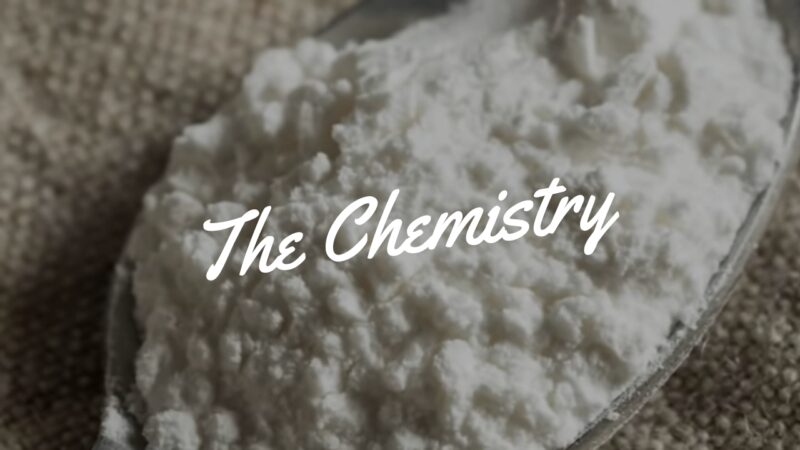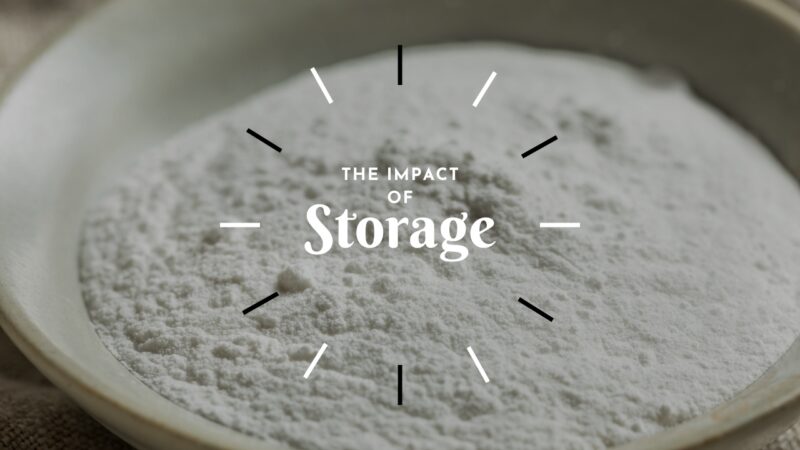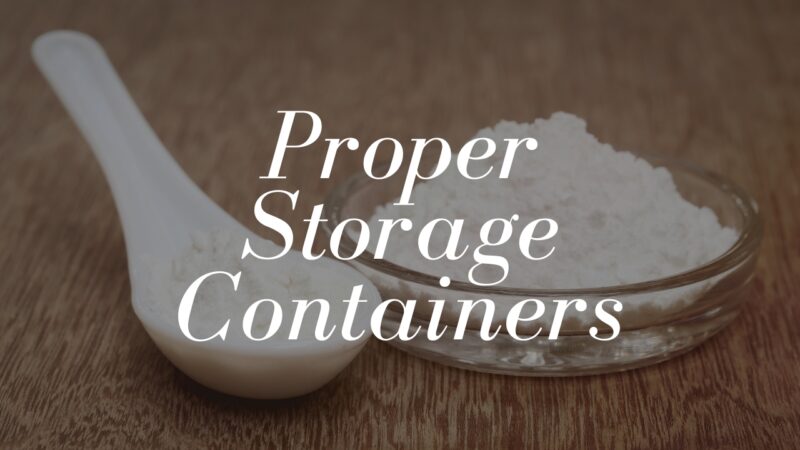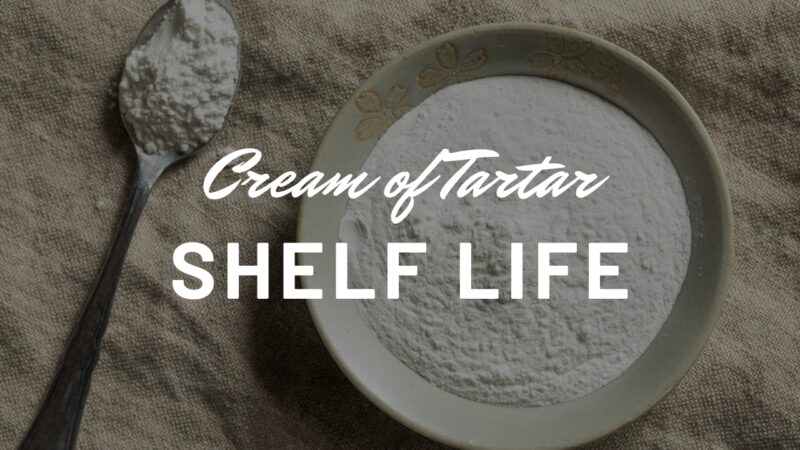In the heart of every well-equipped kitchen, hidden among various staples, often lays a forgotten white powder known as Cream of Tartar. This unassuming ingredient is in fact, the secret weapon in many culinary delights, bestowing upon your dishes a unique texture and taste.
In this post, we’ll delve into the intriguing world of Cream of Tartar, specifically addressing a question that puzzles many: Can Cream of Tartar expire?
The Chemistry Behind This Ingredient

To understand Cream of Tartar’s shelf life, we must comprehend its chemical nature. Being a salt of tartaric acid, it’s stable and non-volatile. Its properties are not prone to rapid deterioration over time, unlike certain other cooking ingredients.
It’s worth noting that its stability is a direct result of the process that produces it – the fermentation of grapes into wine. This longevity leads us to the first clue about Cream of Tartar’s shelf life.
Can It Expire?
Now, to answer the big question: Technically, Cream of Tartar does not expire or spoil. However, like all food products, it can degrade over time, primarily due to exposure to moisture or contaminants. Though not harmful, the degraded Cream of Tartar may not perform optimally in your recipes. This degradation is why many culinary experts recommend replacing it every three to five years.
The Impact of Storage

Storage conditions greatly impact the longevity and efficacy of Cream of Tartar. Ideally, it should be stored in a cool, dry place, away from heat and light.
- Keep it sealed tightly to prevent moisture and air intrusion.
- Avoid using a damp spoon or introducing any liquid to the container.
- Try to avoid cross-contamination by ensuring the spoon you use is clean and dry.
By following these practices, you can maintain the efficacy of Cream of Tartar for a significantly longer period.
Identifying Degraded Cream of Tartar
Identifying degraded Cream of Tartar can be slightly tricky, as it doesn’t spoil in a conventional sense. However, some signs indicate its reduced effectiveness:
- Check for clumps. While some small lumps may form even in fresh Cream of Tartar, large hard clumps indicate moisture intrusion.
- Notice color changes. It should maintain its white color. If you see discoloration or signs of mold, discard it immediately.
- Lastly, perform a simple functionality test. Whip up some egg whites with a bit of Cream of Tartar. If they maintain their peak, your cream is fine.
Proper Storage Containers

The right kind of storage container can make a world of difference when it comes to preserving the effectiveness of Cream of Tartar. Glass containers with airtight lids are a popular choice, as they do not react with the cream and provide a good seal.
Alternatively, you can use ceramic or stainless steel containers, but avoid plastic or metal containers that can react with the cream. Regardless of the material, ensure that the container is clean and completely dry before storing the cream.
Commercial Shelf Life
While Cream of Tartar itself doesn’t spoil, commercial products usually come with a ‘best by’ date. This isn’t an expiration date but rather the manufacturer’s estimate of the time during which the product will maintain peak quality.
After this date, it doesn’t mean the Cream of Tartar is harmful, but there’s a chance it might not work as efficiently in your recipes. Given the low cost of the product, many choose to replace it once it reaches this date.
Myth Busting: Common Misconceptions
There are many misconceptions revolving around the shelf life of Cream of Tartar. The most common one is that it turns toxic after a certain period.
Rest assured; this is not the case. Even if it degrades, it does not produce harmful substances. Another misconception is that refrigeration extends its shelf life. This isn’t necessary due to its stable chemical structure and could potentially introduce unwanted moisture.
Alternative Uses

Even if you’ve decided your Cream of Tartar has passed its prime for culinary use, don’t rush to discard it. There are numerous other uses for this versatile ingredient:
- Cleaning: Mixed with vinegar, it becomes a potent cleaning solution for metals and porcelain.
- Stain removal: It’s effective in removing certain types of stains from clothes.
- Craft projects: It’s used in homemade playdough or slime recipes.
Replacing Cream of Tartar in Recipes
If you discover your Cream of Tartar isn’t up to the mark, there are several replacements you can use in your recipes, such as lemon juice or white vinegar. They both contain a similar acidity that can mimic the chemical reactions Cream of Tartar is used for.
For each teaspoon of this ingredient in the recipe, you can substitute it with 1.5 teaspoons of lemon juice or white vinegar. However, remember these substitutes might slightly alter the taste of your recipe.
Health Benefits
Aside from its culinary uses, Cream of Tartar is packed with health benefits:
- Rich in potassium, it can help regulate blood pressure.
- It can help fight bacterial infections.
- Its alkaline properties can help maintain the body’s pH balance.
However, consume it in moderation, as excessive intake can lead to hyperkalemia, a condition caused by high potassium levels.
Is Cream of Tartar Safe for Everyone?
While generally safe for consumption, Cream of Tartar is high in potassium, which can be harmful to certain people. Those with kidney problems, heart conditions, or on potassium-sparing diuretics should avoid its intake.
Pregnant women and nursing mothers should also consult with a health professional before consuming Cream of Tartar to ensure the safety of them and their children.
Culinary Experiments
Experimenting with Cream of Tartar in your kitchen can elevate your cooking. Try using it for stabilizing egg whites in meringues or soufflés, preventing sugar crystallization in your candy recipes, or even adding it to your whipped cream to increase its volume and stability.
With its unique properties, Cream of Tartar is a star player in many culinary successes, so don’t hesitate to put it to good use.
Closing Thoughts
To sum it up, while Cream of Tartar doesn’t expire in the traditional sense, its effectiveness can decrease over time due to poor storage conditions or prolonged shelf life. Armed with the knowledge from this post, you can ensure that your Cream of Tartar remains an effective and potent tool in your culinary adventures. Just remember to check it, store it properly, and not to fear its ‘best by’ date.

